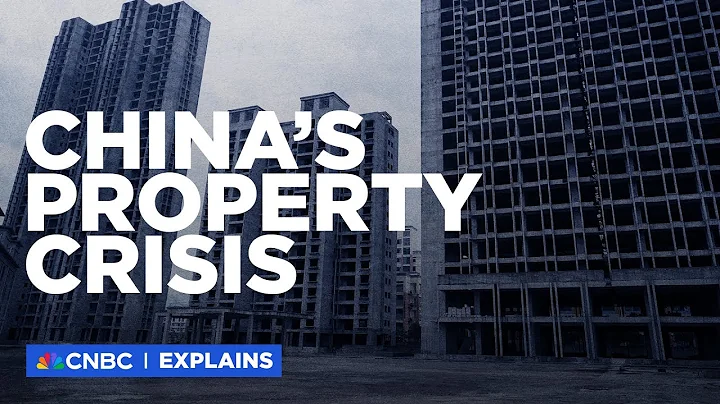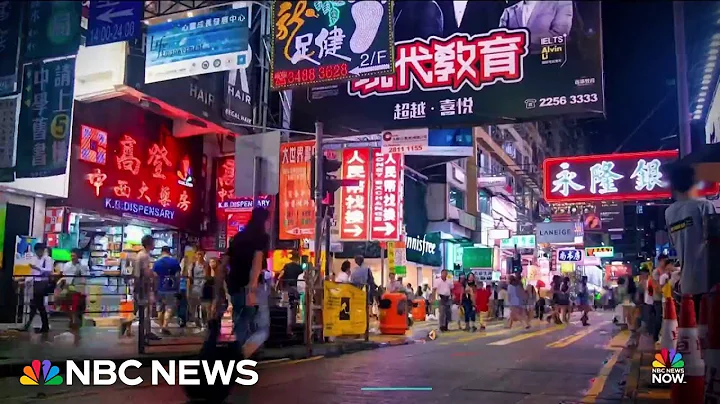
Can Vietnam become the next world factory?
1
Vietnam’s property market is skyrocketing
While China’s property market is dejected, our neighbor Vietnam is experiencing a carnival.
The monthly national second-hand housing market report for April just released by Shell Research Institute shows that the transaction volume of second-hand housing in 50 cities fell by more than 20% month-on-month and about 50% year-on-year.
Earlier, the national average price of commercial housing in the first quarter of 2022 was 9,552 yuan/square meter, falling below 10,000 yuan again. Behind this, national housing prices have fallen for 14 consecutive months.
Different situations in the same world. We were in emo, but the neighbor next door was crazy about disco and danced Wild Wolf Disco.
A report from the Ministry of Construction of Vietnam shows that in the first quarter of 2022, house prices in 8 regions including Hanoi, Ho Chi Minh City, Da Nang, Haiphong, Binh Duong, Dong Nai, and Khanh Hoa are all rising.
This is not an isolated case. In Vietnam today, housing prices are rising almost across the country -
As of February this year, the average price of new homes in 65 key monitored cities in Vietnam has reached the equivalent of RMB 17,561 per square meter.
In the past April, housing prices in Ho Chi Minh City, the largest city in Vietnam, reached a historical high in Vietnam in the past 10 years.

Just 6 years ago, the price of affordable real estate in this city was still US$790/square meter. Now it has risen to a maximum of US$2,200/square meter, an increase of nearly three times!
In Hanoi, the capital of Vietnam, house prices also increased by 4.4% in just three months from December last year to February this year. Compared with the same period, residential prices in Hanoi have increased by 20-25% on average, and in some areas the increase has even been as high as 35-74%.
This scene should be familiar to a Chinese. It is very similar to how our property market took off more than ten years ago.
Where did this crazy rise in Vietnam’s property market come from? In the short term, there are several reasons for .
First, land prices are rising. According to data, in March this year alone, land and residential land prices across Vietnam increased by an average of 20%-25% during the same period. A piece of land in Thu Thien Rich Street in Ho Chi Minh City was auctioned for 24.5 trillion VND, equivalent to a unit price of about 690,000 yuan/square meter, setting a historical record.

The top mansions in the world must bow their noble heads in front of such a piece of land. It is hard to imagine that such a sky-high price of land does not appear in the United States ( per capita GDP - 69,400 US dollars), but in Vietnam (per capita GDP - 3,700 US dollars).
Second, supply is in short supply. As of the first quarter of this year, the supply of new houses in Vietnam was 3,500 units, a decrease of 39% from the previous quarter and a decrease of 20% from the same period last year. Many new development projects are sold out as soon as they go on sale. It is common for buyers to have money in their pockets but not be able to buy a house.
What's more, housing prices are rising rapidly in big cities where the population is flowing in. Take Hanoi and Ho Chi Minh City as examples. These two cities gather nearly one-fifth of Vietnam's population. The continuous influx of new blood is the most solid foundation for rising housing prices.
Of course, with the rising housing prices, most people in these two cities cannot afford to buy a house. In the central city of Ho Chi Minh City, the price of a villa generally costs 1 million to 3 million US dollars. Even a wealthy family with an annual income of 20,000 US dollars will take 50 years to afford it without food or drink.
Let alone ordinary people. According to the current housing price-to-income ratio, it will be difficult for most people to buy a property in these two cities in their lifetime, even in remote suburbs.
With the influx of real estate speculators, it is not difficult to imagine that housing prices in Vietnam will continue to be crazy.
2
Vietnam has entered a moment of soaring
It’s not just Vietnam’s housing prices that are jumping into disco.
In recent times, at least three areas in Vietnam have taken off.
The first one is the exit.
Data released by Vietnam Customs shows that in the past quarter, Vietnam’s total import and export of goods was US$176.35 billion, a year-on-year increase of 14.4%. Among them, the export volume was US$89.1 billion, a year-on-year increase of 13.4%.
In March alone, Vietnam's export volume reached US$34.71 billion, a month-on-month increase of 48.2% and a year-on-year increase of 14.8%.
What is this concept? Let's make a comparison. In the same first quarter, Shenzhen's export volume was US$62.7 billion. In other words, Vietnam’s foreign trade in the first quarter has caught up with Shenzhen.
A scene that can be corroborated is that in the past few months, clothing brand companies and retailers in Europe, the United States, Japan, and Australia have accelerated the transfer of large quantities of mid- to low-end textile and clothing orders to Vietnam. Vietnam’s domestic orders have surged, and it is said that they will be queued until the end of the year. . The port was blocked, the factory was working overtime, and even a bizarre joke was born -
There is a factory in Vietnam that tested nucleic acid , and 80% of the employees were positive and 20% were negative. 80% of those who tested positive continued to work, and the 20% who tested positive stopped working and went home to quarantine.

Behind the slightly absurd jokes, the popularity of orders from Vietnam can be seen. In sharp contrast, the phenomenon of canceled orders in China has increased sharply, with some companies' order loss rates even as high as 80%. Many of these orders go to Vietnam.
The second one is the stock market.
Let’s look at a picture first. In 2021, Vietnam’s stock index rose by 125.54%, the highest in the world.

This is not the most surprising thing. In the past two years, black swans have occurred frequently. The global stock market has been struggling under the shadow of the new crown epidemic, the Russia-Ukraine war, and the Federal Reserve's interest rate hikes. Many indexes have experienced plummets. However, the Vietnam Index has gone out of its own way-
during the new crown pandemic, it rose 232%.
If we extend the time a little longer, the Vietnamese stock market is simply a myth -
The Vietnam VN30 index has risen from less than 400 points in early 2012 to more than 1,500 points now, an increase of nearly 4 times.

Look at our big A, it is still guarding 3000 points, I feel like crying.
The third one is investment.
According to the Vietnam People's Daily news, in the first four months of this year, Vietnam attracted foreign direct investment funds of more than 10.8 billion US dollars, a year-on-year increase of 88.3%.
In the first quarter of 2022, the European Chamber of Commerce in Vietnam’s Business Climate Index (BCI) rose to 73 points, the highest level since the outbreak of the fourth wave of the epidemic. This shows that European companies’ confidence in Vietnam’s investment environment continues to increase.
In Vietnam's Binh Duong Province (equivalent to our Guangdong Province), from the beginning of the year to April 30, the province's industrial parks attracted US$1.8 billion in foreign direct investment, more than four times the same period in 2021.
A classic weathervane is Li Ka-shing , which has just divested from the UK. He also stated in April that
will inject a large amount of capital into Ho Chi Minh City in the shortest possible time to develop high-end real estate and other projects.

Ho Chi Minh City, a straight-line distance of 1,500 kilometers from Hong Kong, has become the latest habitat of "migratory bird" Li Ka-shing.
In today's Vietnam, the three carriages that drive the economy - investment, consumption, and exports are all getting busy. The country's spring is here.
3
big winner
Looking at Vietnam today, many people think of China in the past.
On the first day of the Lunar New Year in 2022, the men's football team lost to Vietnam 1:3 and missed the Qatar World Cup. Fans across the country transformed into crazy warriors and joke makers. On the other side, Vietnamese fans are having a good year and the country is celebrating the rise of football.
But what Vietnam has grown in recent years is far more than just football. In the past ten years, Vietnam's average GDP growth rate has been 6.9%. In 2020, the growth rate has surpassed China and stood on the top of Asia. It is no exaggeration to say that Vietnam has become one of the fastest growing economies in the world today.

More importantly, many manufacturing industries have already regarded Vietnam as their next destination. Some media have made statistics -
Samsung over 50% of mobile phone exports and 1/3 of electronic product shipments are produced in Vietnam;
over 50% of Nike's footwear products and 30% of clothing products are produced in Vietnam. Completed in Vietnam factory;
1/3 of footwear products and 1/5 of clothing in the US market are processed and manufactured in Vietnam...
Olympus , Microsoft , Nokia , Canon , LG , Foxconn , Sony and other multinational giants have also opened factories in Vietnam. Intel even plans to put 80% of its global chip production capacity here. The CPU that many people buy is already made in Vietnam.

These manufacturing companies were originally rooted in Guangdong, Fujian, Jiangsu and Zhejiang in China.
Thanks to this, Vietnam's import and export volume has increased from 36.45 billion US dollars to 668.54 billion US dollars in 20 years, an increase of 17 times, and the trade scale has also ranked among the top 20 in the world.
To a certain extent, Vietnam has begun to take shape as a "world factory".
Many people can’t help but wonder, why Vietnam?
There are Vietnam’s own efforts here. Looking back at the development history of Vietnam in the past thirty years, there are many shadows of "crossing the river by touching China" -
In 1986, Vietnam launched the "reform and opening up" policy to promote bold economic opening up and relaxation of restrictions;
In 1995, Vietnam Joined ASEAN , joined the World Trade Organization (WTO) in 2007, and has signed 16 free trade agreements with countries such as the United States, China, India, Japan, and South Korea, becoming one of the countries with the most regional trade agreements in the world;
In 2018, Vietnam has joined the TPP; in June 2020, the Vietnamese Congress also approved the free trade agreement (FTA) with the European Union (EU). The agreement plans to eliminate 99% of tariffs on exports from both parties within 10 years.
Powerful policies, coupled with innate conditions such as more than 3,200 kilometers of coastline and a large number of cheap labor, Vietnam has become a "potential stock" in the world economic landscape, accelerating its integration into the international industrial chain.
In addition, there is an external catalyst. After the Sino-US trade friction, the trend of industrial chain reorganization has become more and more obvious. Developed countries led by the United States are unwilling to put their eggs in one basket, so they want to use this to transfer and disperse their manufacturing industries in China. At this time, developing countries such as Vietnam and Mexico have become the best choices.
These jointly created the rise of Vietnam.
4
Epilogue
Looking at the "Vietnam Miracle", a voice began to emerge -
Vietnam will replace China and become the next world factory.
But in fact, this statement lacks basic understanding of China and Vietnam.
On the one hand, Vietnam covers an area of less than 330,000 square kilometers, which is smaller than Yunnan Province and only 1/30 of China. Its population is more than 95 million, which is about 1/14 of China.
Vietnam’s current proven coal reserves are about 3.8 billion tons, while China’s annual raw coal production is 3.75 billion tons; Vietnam’s proven oil reserves are about 250 million tons, while China’s annual crude oil production reaches 189 million tons. Tons - this is not on the same scale at all.
Vietnam simply does not have the ability to undertake such a huge industrial system in China.
On the other hand, China is the only country in the world that has all industrial categories in the United Nations Industrial Classification Catalog, including all 41 major categories of industries. In terms of output, among the world's more than 500 industrial products, China ranks first in 220. China's industrial chain has an incredibly detailed division of labor.
However, 3/4 of Vietnam’s territory is covered by mountains and plateaus, which greatly limits Vietnam’s industrial cluster effect and industrial division of labor. Take the automobile industry as an example. After more than 30 years of hard work, Vietnam’s current autonomy rate is only 10%. Not as good as Mexico.
In the long run, Vietnam may snatch some jobs from industrial transfers in inland cities such as Henan and Hunan, but after all, it is only a supporting role in the "world's factory".
For China, the trend of restructuring the global industrial chain is unstoppable. The United States and other countries will definitely find ways to dismantle their dependence on Chinese manufacturing. In the future, more industries will be transferred to countries like Vietnam.
There are only two things we can do -
advance upstream of the industrial chain and do core manufacturing that the world cannot live without;
make people rich, expand the domestic market, and achieve self-production and self-sales.
From Vietnam, we also want to understand a truth -
Producing low value-added products can never avoid the fate of being a laborer.





















